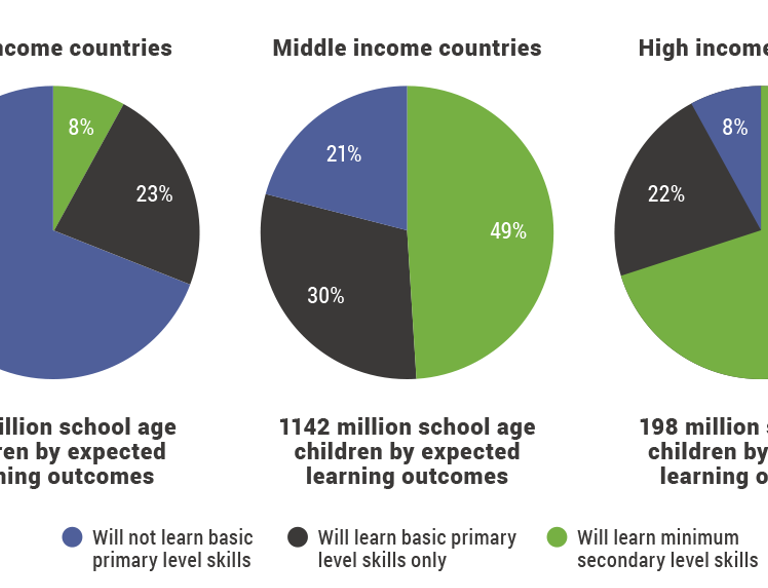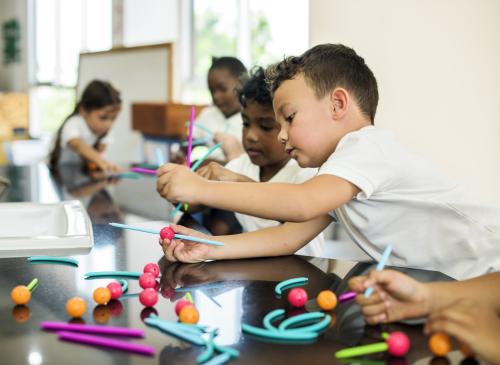This blog is a response to Jal Mehta’s December 2020 op ed in the New York Times, “Make Schools More Human.”
“The pandemic is giving us an opportunity to make a pivot that we should have made long ago. We have been on a treadmill of short-term fixes, pretending that if we just get the right test, the right incentives, put the right pressure on teachers and students they will achieve. … But we are realizing what we should have known all along: that you just can’t widget your way to powerful learning, that relationships are critical for learning, that students’ interests need to be stimulated and their selves need to be recognized.”
– Jal Mehta
The situation is dire. American education is slipping: Only 35 percent of fourth grade students were at least proficient readers on the 2019 National Assessment of Educational Progress, a serious concern for their long-term academic achievement and economic well-being. International test scores are an embarrassment for the United States with our 15-year-olds testing at 13th in reading, behind China and Canada, and 37th in mathematics, behind Russia and Lithuania. Many industrialized nations, including Canada and Singapore, realized that their school systems—designed to meet the needs of the 19th century—were simply not preparing children for the workforce of the 21st century. In less industrialized nations, the situation is even bleaker, as illustrated by 2016 projections from The Education Commission.
Figure 1. Expected learning outcomes of the 2030 student cohort

Source: The Education Commission (2016)
And this was all before the pandemic. Students, teachers, administrators, and families face unprecedented pressure under COVID-19. Despite teachers’ herculean efforts, an analysis of nationally representative surveys of over 1,000 teachers across the United States found that 56 percent of teachers nationwide covered half of the material they teach in a typical year, at most, when data were collected in fall 2020. A recent projection estimated that students would begin school in fall 2020 having lost up to 37 percent of a typical school year in reading and as much as 63 percent of a typical year in math.
Some have described the economic recovery from COVID-19 as K-shaped with exacerbated disparities between affluent individuals and those who face a yawning opportunity gap. This likely applies to educational disparities, too. For example, the same estimate of students’ fall 2020 reading and math skills cited above suggested that the top third of students could experience gains in reading during the pandemic. Fortunately, initial data on students’ academic achievement in fall 2020 are beginning to come in, and the situation may not be as disastrous as expected. Evaluating the results of almost 4.4 million third to eighth grade students who took the NWEA MAP® GrowthTM assessments this fall indicated that students’ reading performance was similar that of their same-grade peers from fall 2019, but there was a 5-10 percentile point decline in math scores, on average, from year to year. Yet, the level of student attrition in these results remains a concern, since the students most vulnerable to the adverse effects of COVID-19 (i.e., those who had lower achievement in fall 2019, were in schools with more socioeconomically-disadvantaged students, and who were racial or ethnic minorities) were more likely to be missing from the fall 2020 MAP® data.
These disparities in academic achievement, however, are only part of the story. As Mehta reminds us, education is fundamentally about relationships. Students must be supported through pedagogy that can adapt to their needs with respect for their circumstances and experiences. The consequences of a narrow focus on the achievement gap without thinking more broadly about the opportunity gap and students’ backgrounds are clear. Mehta notes that over the past several months, the schools that have functioned best during the pandemic focused on community-building.
Though bemoaning the current educational system is in fashion, the COVID-19 period reveals what we must and can do moving forward. We can reimagine educational systems that stop prioritizing the imparting of narrowly construed information that can be tested in narrowly construed tests. Instead, we can be guided by the science of how children learn and what they need to learn to succeed in the workplace of tomorrow.
The central question that inspires a new vision of education is this: What do we want our graduates to look like so that they become thinking, collaborative, and global citizens? Batelle for Kids and EdLeader 21 introduced the concept of Portrait of a Graduate to ask this very question. In our book “Becoming Brilliant,” and in our new Brookings Big Ideas report, we not only ask “What do we want as outcomes?” but “What does an education system need to do to get children to this goal?”
Redefining success
Today, career readiness broadly requires mastery of collaboration, communication, all relevant content knowledge, critical thinking, and creative problem-solving—a reframing of education for the 21st century that is likewise backed by the majority of educators in a recent survey. At the same time, researchers supporting this shift suggest that success will require that we think of a breadth of skills across a breadth of ages (e.g., learning to learn and lifelong learning) and a breadth of contexts (e.g., apps, informal education).
Our version of the approach embraces what we call the 6Cs:
- Collaboration: Getting along with others to promote community and controlling impulses
- Communication: Speaking, reading, writing, and listening
- Content: Reading, writing, math, science, social studies, the arts, and executive function skills, such as increasing attention and working memory
- Critical thinking: Evaluating the quality of information received
- Creative innovation: Using academic content and critical thinking to explore and build something new
- Confidence: Taking reasonable risks, demonstrating persistence and adaptability when faced with failure
These skills are backed by scientific evidence, create a systemic approach to learning, and are measurable. These skills scaffold each other, beginning with collaboration. Evidence indicates that even learning how to read and do math builds on collaboration with others.
We know our education system does not work for all students and we know what to do moving forward. To take action, however, will require that educators and policymakers redesign old systems in ways that gradually bring students up to speed with the new skills. In Mehta’s piece, he concludes with a challenge, “There has been considerable attention to the health crisis, and some to the economic crisis. But there hasn’t been a serious commitment to the corresponding education crisis.” Perhaps now is our time.
On January 13 at 12 p.m. EST, we invite people to start this discussion by joining our webinar “A new path to education reform: The next chapter on 21st century skills.”
The Brookings Institution is committed to quality, independence, and impact.
We are supported by a diverse array of funders. In line with our values and policies, each Brookings publication represents the sole views of its author(s).










Commentary
COVID-19 sparks an overdue discussion on education reform: An optimistic vision
January 4, 2021